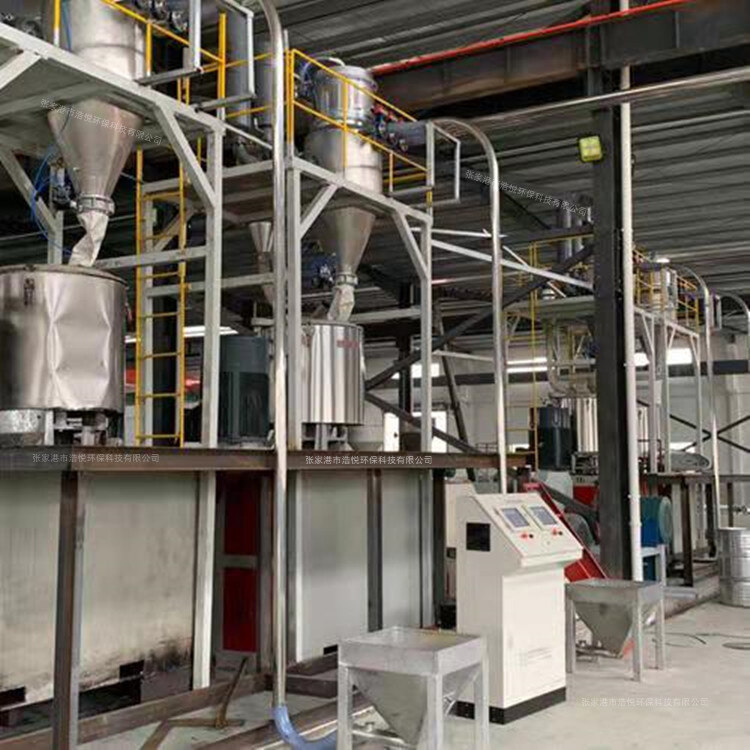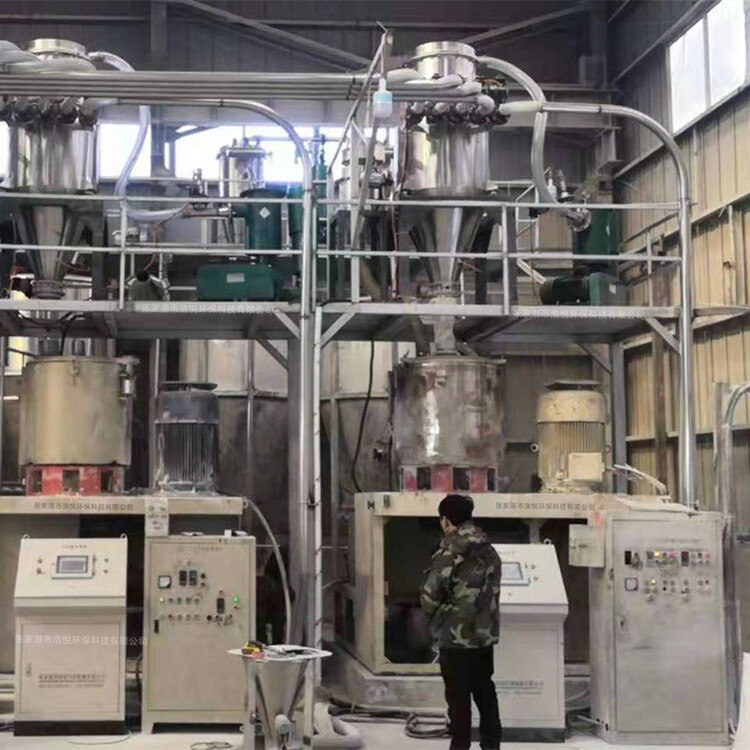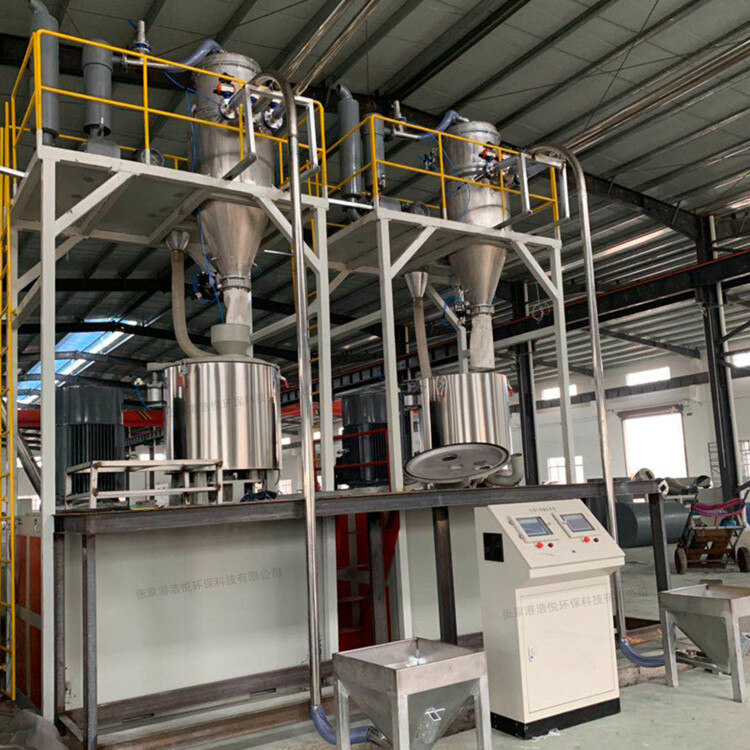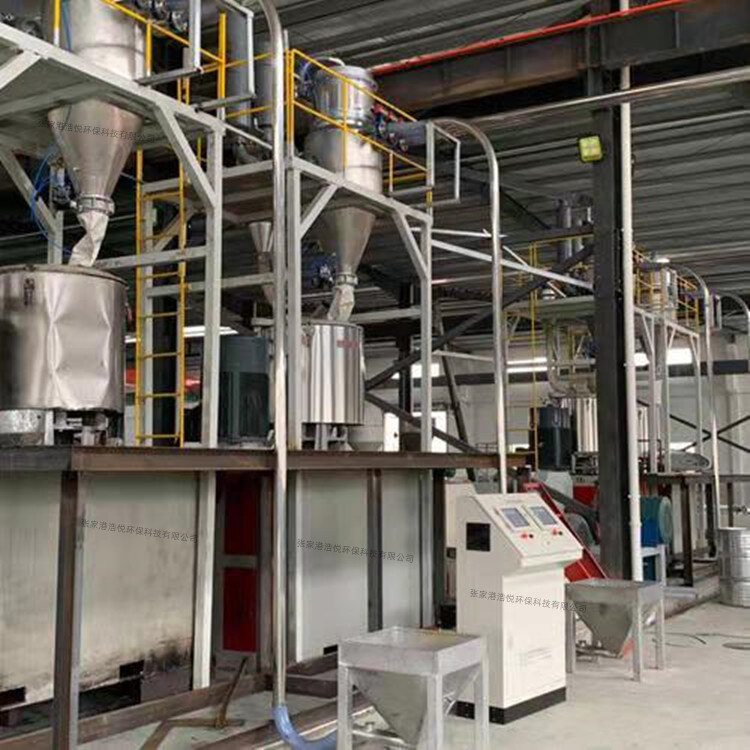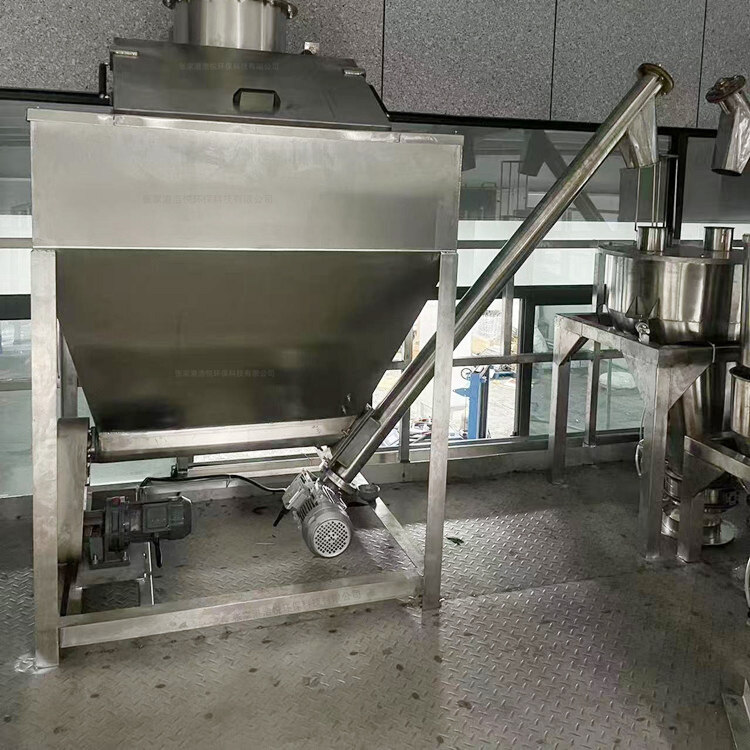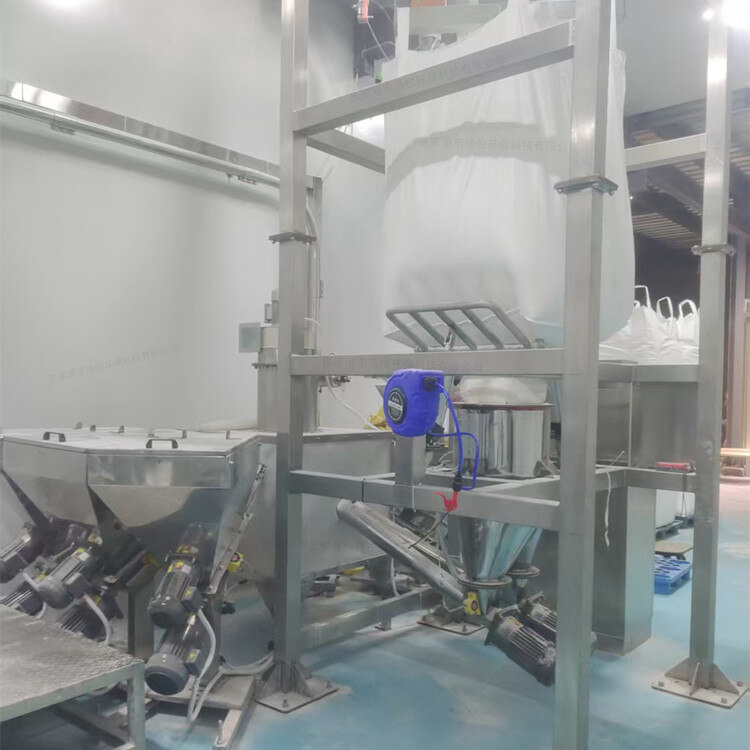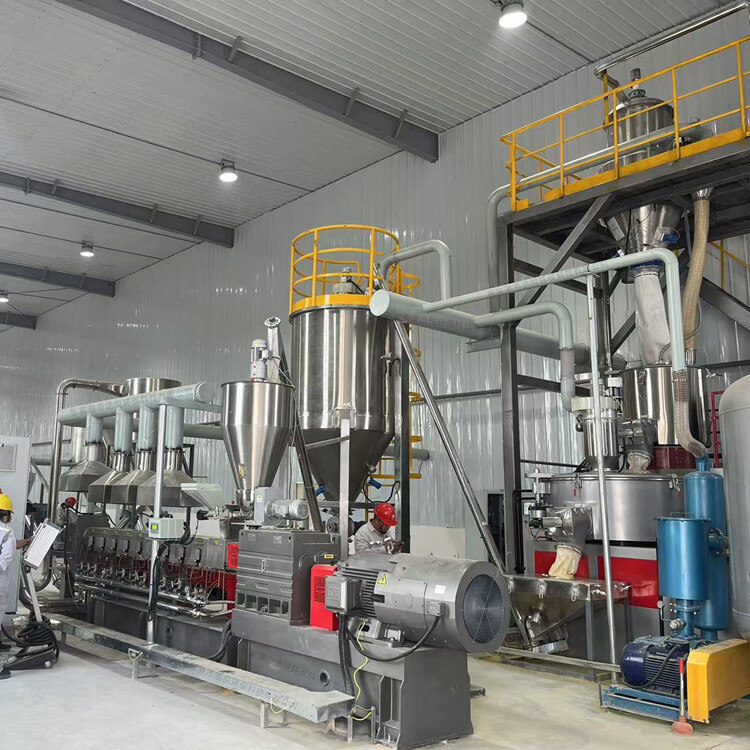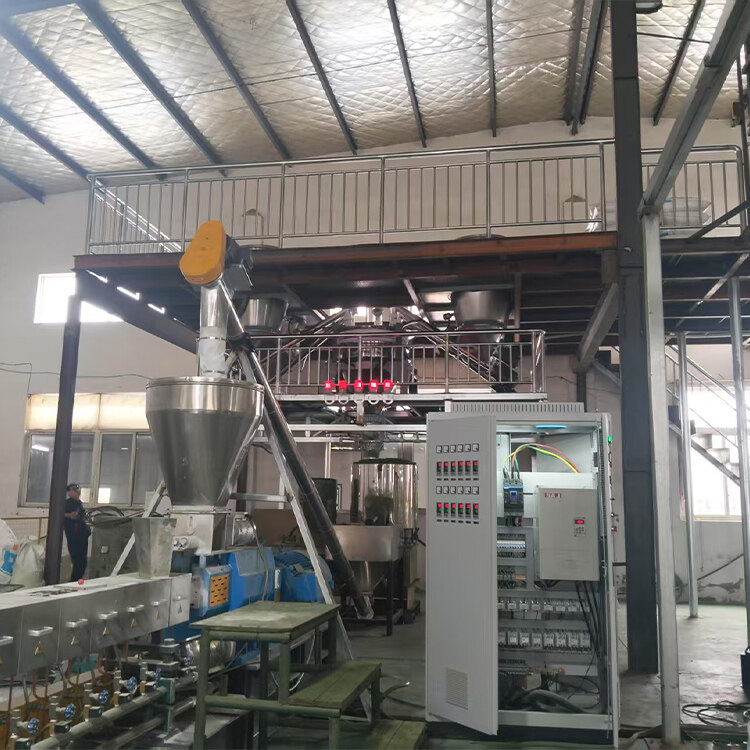- Introduction to automatic batching machine and fully automatic batching machine equipment
- The powder metering system tells you about the introduction of the mixing and drying machine
- 1000kg vacuum feeding machine
- Fully automatic small material batching system
- Research on Innovation of Automatic Weighing Machine Technology
- Design and operation of automatic batching system using PLC, industrial computer and frequency converter
Automatic Cable Material Measurement System
- Category:Automatic metering and conveying equipment
- Hits:126次
- Release Date:2025-06-23
- Share:
- Inquiry
- Details
1、 Core functions and technological advantages of the system
High precision measurement ensures product quality
The formula of cable material is crucial for the electrical performance, mechanical strength, and temperature resistance of cables. The automatic measuring system adopts various methods such as weighing measurement and volumetric measurement to achieve precise proportioning of main and auxiliary materials. For main materials such as polyvinyl chloride and polyethylene, the measurement accuracy can reach ± 0.5%; For low-dose additives such as carbon black and antioxidants, the accuracy can be improved to ± 0.1% through a weight loss measuring scale, effectively avoiding problems such as decreased cable insulation performance and accelerated aging caused by formula deviations.
Automated production improves efficiency
The system can simultaneously process 8-20 different materials, and through the PLC control system and industrial touch screen, it can call preset formulas with one click to automatically complete the measurement, transportation, and mixing of each material. Compared to traditional manual weighing, the production efficiency has increased by more than 50%, while reducing human operational errors and minimizing raw material waste. For example, in the production of insulation materials for power cables, the system can continuously and stably supply materials to meet the high-speed production needs of extruders.
Intelligent monitoring and security protection
Built in material level monitoring, blockage alarm, overload protection and other functions, real-time monitoring of equipment operation status. When the material level in the silo is low, the pipeline is blocked, or the measurement deviation exceeds the limit, the system will automatically shut down and issue an alarm, while pushing fault information through SMS or APP. In addition, for some flammable additives (such as organic peroxides) in cable materials, the system is equipped with explosion-proof motors, anti-static pipelines, and grounding devices to prevent safety hazards caused by static electricity.
Data traceability and management
The system records information such as raw material ratios, weighing data, and operating parameters for each batch of production, supports integration with the factory MES system, and enables real-time uploading and historical traceability of production data. Management personnel can optimize formulas through data analysis, improve product quality stability, and meet the traceability requirements of international certifications such as ISO and UL for the production process.
2、 System composition and working principle
1. Core equipment unit
Storage unit
Storage bin: made of carbon steel or stainless steel material, with a capacity of usually 5-50 cubic meters. The storage bin is designed with a conical bottom and a cone angle of 45 ° -60 °. It is equipped with a vibrator or arch breaking device to prevent materials (such as talcum powder and calcium carbonate) from clumping and blocking. Install a pulse bag filter on the top of the silo to filter dust and maintain a clean workshop environment.
Material level monitoring device: Real time feedback on the inventory of materials in the warehouse is provided through anti rotation, heavy hammer, or radar level gauges. When the material level is low, the replenishment process is automatically triggered to ensure production continuity.
unit of measurement
Weighing measurement: using high-precision weighing sensors (such as strain gauges), combined with digital filtering algorithms, to eliminate external interference. By using the "coarse weighing+fine weighing" mode, most of the materials are quickly added first, and then slowly replenished to the target weight to improve measurement accuracy and speed.
Volumetric metering: For materials with good fluidity and stable density (such as granular polyethylene), spiral feeders, rotary valves, and other devices are used to transport them in a fixed volume, which is cost-effective and suitable for large-scale feeding.
Weight loss measurement: commonly used for measuring small doses and high-value additives, the discharge amount is calculated by real-time monitoring of changes in the weight of the silo, with high accuracy and not affected by fluctuations in material characteristics.
transport unit
Pneumatic conveying system: using Roots blower or vacuum pump to generate positive/negative pressure, and conveying materials to the mixer or extruder through pipelines. This method is suitable for long-distance and multi-point transportation, and has good sealing to avoid dust leakage.
Spiral conveyor: using U-shaped groove and shaftless spiral blades, suitable for short distance (<15 meters) transportation, especially suitable for powdered materials (such as carbon black), to prevent material adhesion and blockage.
Vibration conveyor: Driven by a vibration motor, the material slides along the tank and is commonly used for short distance feeding from the measuring bin to downstream equipment. It can be matched with a frequency converter to adjust the conveying speed.
Mixing Unit
Double screw belt mixer: suitable for uniform mixing of powdered and granular materials. The stirring blade is in a spiral shape and operates alternately in forward and reverse directions to ensure a mixing uniformity of over 99%.
Planetary mixer: suitable for cable materials with high viscosity and high filling system (such as rubber insulation materials), the stirring blade rotates while revolving, generating strong shear force to promote the full dispersion of materials.
control unit
PLC+touch screen: Operators can set formula parameters, conveying speed, mixing time, etc; The system displays real-time device operating status, measurement data, and fault codes, supporting visual operations and remote debugging.
Data Interaction Interface: Supports communication protocols such as Modbus and Profibus, seamlessly integrates with factory ERP and MES systems, and enables centralized management and analysis of production data.
2. Workflow
Formula input: The operator imports the preset formula through the touch screen, and the system automatically calculates the ratio and weighing sequence of each material.
Automatic measurement: PLC controls the feeding mechanism of each silo, completes material weighing in the "coarse weighing+fine weighing" mode, and real-time feedback of measurement data to the control system.
Mixed conveying: The weighed material enters the mixer through the conveying system and is thoroughly mixed according to the set time and speed; The evenly mixed cable material is then transported to the extruder for subsequent processing.
Monitoring and Recording: The system monitors equipment operating parameters throughout the entire process, records production data, automatically alarms and shuts down in case of abnormalities, ensuring production safety and controllable quality.
3、 Typical application scenarios
Production of power cables
Accurately mix polyvinyl chloride insulation material and cross-linked polyethylene material to ensure the insulation performance and temperature resistance level of cables, and meet the production needs of high-voltage and ultra high voltage cables.
Manufacturing of communication cables
For special cable materials such as low smoke halogen-free fuels and shielding materials, precise addition of low-dose additives such as carbon black, flame retardants, and coupling agents is achieved to improve the signal transmission stability and flame retardant safety of cables.
Automotive cable production
In the preparation of high-temperature and oil resistant cable materials, the precise control of the ratio of rubber, fillers, and additives ensures the reliability of the cable under complex working conditions.
4、 Technological development trends
Intelligent upgrade: Introducing AI algorithms to optimize measurement strategies, predicting material characteristic changes through machine learning, and automatically adjusting feeding parameters; Utilizing IoT technology to achieve remote diagnosis and predictive maintenance of devices.
Green and energy-saving: Develop low-energy conveying technologies (such as variable frequency control fans), adopt energy-saving motors and heating systems, and reduce operating costs; Optimize equipment structure to reduce raw material residue and waste.
Flexible production: Modular design supports rapid replacement of measuring units and conveying pipelines, adapts to different cable material formulas and production processes, and meets diverse market demands.
The automatic measurement system for cable materials has become a core equipment for enhancing competitiveness in the cable manufacturing industry through technological innovation and functional upgrades. In the future, with the deepening application of intelligent manufacturing technology, this system will play a more important role in ensuring product quality and promoting green development in the industry.


